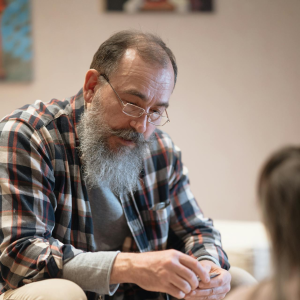Key Takeaways:
- Under the new Postal Service Health Benefits (PSHB) program, postal employees must take specific steps to ensure that their dependents are fully protected, including re-enrollment during the 2024 open season and providing required documentation.
- Retirees need to understand how PSHB coordinates with Medicare to ensure continuous coverage for dependents, particularly those who may require specialized care.
Is Your Family Covered? How to Ensure Dependents Are Fully Protected Under PSHB
As the Postal Service Health Benefits (PSHB) program launches in 2025, postal employees and retirees need to be prepared for the changes ahead. The new program, designed specifically for the postal workforce, will require employees and retirees to transition their current Federal Employees Health Benefits (FEHB) coverage to PSHB. Ensuring your dependents are fully covered during this transition is essential for avoiding coverage gaps and ensuring access to necessary health care services.
The Importance of Transitioning to PSHB for Your Family
The shift to PSHB is not just a procedural change—it affects how health coverage is administered for postal employees and their dependents. The PSHB program offers coverage options similar to the existing FEHB program but tailored specifically to the needs of postal employees. For families, this means reviewing plan options carefully and understanding new eligibility criteria.
As part of the shift to PSHB, eligible dependents will continue to be covered, but postal employees will need to ensure that they actively enroll their dependents during the upcoming open enrollment season. This period, scheduled from November 11 to December 9, 2024, will be the first opportunity to select a PSHB plan that works best for you and your loved ones. It’s crucial to make the right choice during this time to avoid being automatically enrolled in a default plan.
Who is Eligible for Coverage?
The eligibility criteria for dependents under PSHB closely mirror those of FEHB, with some differences designed specifically for the postal workforce. Eligible dependents include:
- Spouses: Legally married spouses remain eligible for health coverage under PSHB.
- Children: Dependent children under the age of 26, including biological children, stepchildren, adopted children, and foster children who meet specific criteria, are covered.
- Disabled Adult Children: Children over the age of 26 who are incapable of self-support due to a physical or mental disability may qualify for continued coverage under the PSHB program.
One difference with the PSHB program is that domestic partners may also be eligible for coverage, though this will depend on final regulations issued by the Office of Personnel Management (OPM). It’s essential to review your dependents’ eligibility before the open enrollment period to ensure that all necessary paperwork is submitted.
Steps to Enroll Dependents in PSHB
Successfully enrolling your dependents in the PSHB program requires attention to detail and preparation. Here’s what you need to do:
-
Review Plan Options: During the 2024 open enrollment period, postal employees will need to review the available PSHB plans. It’s important to choose a plan that covers the specific medical needs of your family, including pediatric care, mental health services, and any specialized medical care.
-
Prepare Documentation: You will need to verify your dependents’ eligibility. This typically includes providing documents such as marriage certificates for spouses, birth certificates for children, or proof of disability for any dependents who qualify for continued coverage due to disability. Having these documents ready in advance will ensure a smoother enrollment process.
-
Complete Enrollment: The enrollment process will be conducted online through the OPM portal. When enrolling, you will need to select the appropriate plan and enter all necessary information for your dependents. Ensure that you double-check your entries before submitting to avoid errors.
-
Confirm Coverage: After completing the enrollment process, it’s essential to confirm that your dependents are covered. You should receive a confirmation notice detailing your plan and coverage, which you should keep for your records.
Special Considerations for Retirees
For postal retirees, one of the most significant changes under PSHB is how coverage integrates with Medicare. Retirees eligible for Medicare will need to coordinate their PSHB benefits with Medicare Parts A and B. PSHB plans are designed to complement Medicare, with Medicare serving as the primary payer and PSHB covering secondary expenses.
This coordination will help minimize out-of-pocket costs for retirees and ensure that their dependents are also fully covered under PSHB. However, it’s critical to verify that any dependents not eligible for Medicare, such as younger spouses or children, remain covered under the PSHB plan.
Avoiding Common Enrollment Pitfalls
Ensuring that your dependents are fully protected under PSHB requires careful planning. Common issues that can arise during the enrollment process include delays in processing documentation, mistakes in entering information, and missed deadlines. To avoid these problems:
- Enroll Early: Don’t wait until the last minute to complete your enrollment. Early submission allows time to address any issues that may arise.
- Check Your Information: Double-check all the information entered during enrollment, including dependent details, to ensure accuracy.
- Follow Up: If you do not receive a confirmation notice or encounter delays, contact OPM or your benefits coordinator to verify the status of your enrollment.
Continuous Coverage for Dependents: Key Actions to Take
Life events such as marriage, divorce, the birth or adoption of a child, or changes in employment status may require adjustments to your health coverage. It’s important to notify OPM of any life events that affect your dependents’ eligibility for coverage under PSHB. Failing to update this information can lead to coverage lapses or delays in accessing necessary medical care.
For families with dependents receiving specialized or ongoing medical treatment, it’s also essential to confirm that your new PSHB plan covers these services. This includes verifying that your current providers are in-network under your chosen plan and ensuring that your dependents continue to receive the care they need.
Financial Considerations and Coverage Options
While this article does not discuss specific pricing, it’s important to be aware that transitioning from FEHB to PSHB may involve changes to your premiums, copayments, and out-of-pocket expenses. During the open enrollment period, review the details of each plan carefully to understand how these costs may affect your family’s overall health care expenses.
When choosing a plan, consider your family’s unique medical needs. Some plans may offer more comprehensive coverage for specialty care, mental health services, or prescription medications, while others may provide better overall cost savings. By carefully comparing the available options, you can select the plan that offers the best balance of coverage and affordability for your dependents.
What’s Next for PSHB?
As the PSHB program prepares to launch in 2025, staying informed and proactive is key to ensuring continuous coverage for your dependents. Be sure to attend any informational sessions offered by USPS or OPM, and take advantage of available resources such as plan comparison tools. By preparing ahead of time and understanding the enrollment process, you can ensure that your loved ones remain fully protected under the new system.
Ensuring Family Protection Under PSHB
The transition to PSHB represents a new chapter in health care coverage for USPS employees and retirees. By staying informed and taking the necessary steps during the 2024 open enrollment period, you can ensure that your dependents continue to receive the health care they need.






